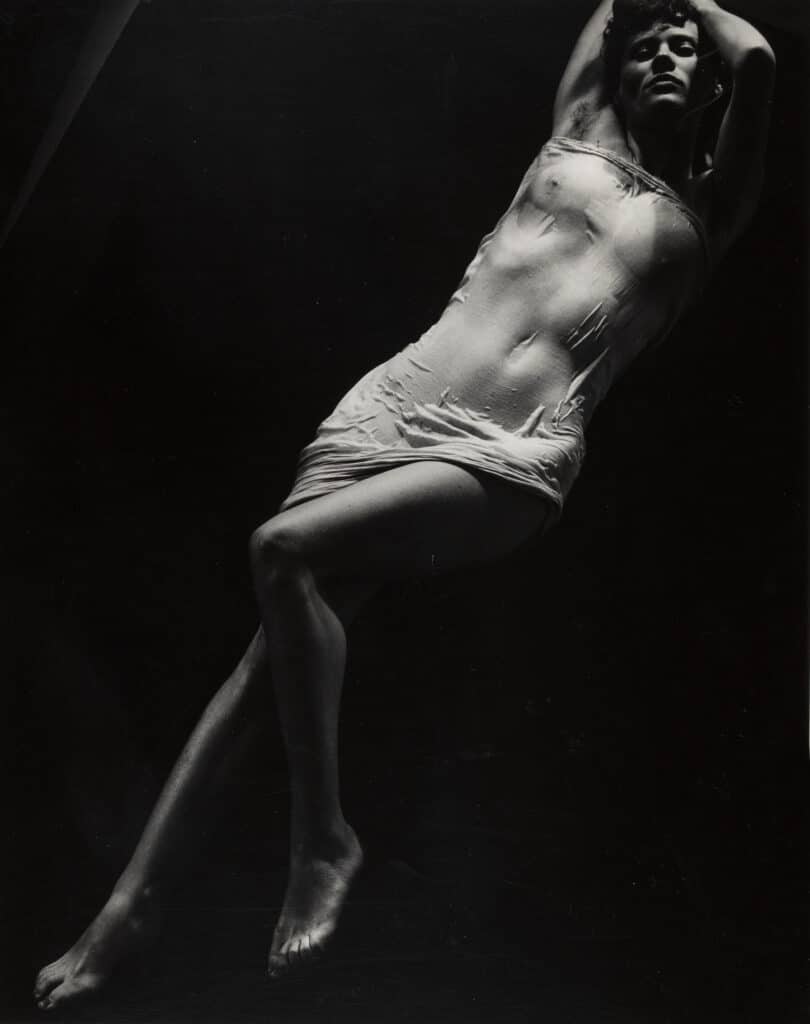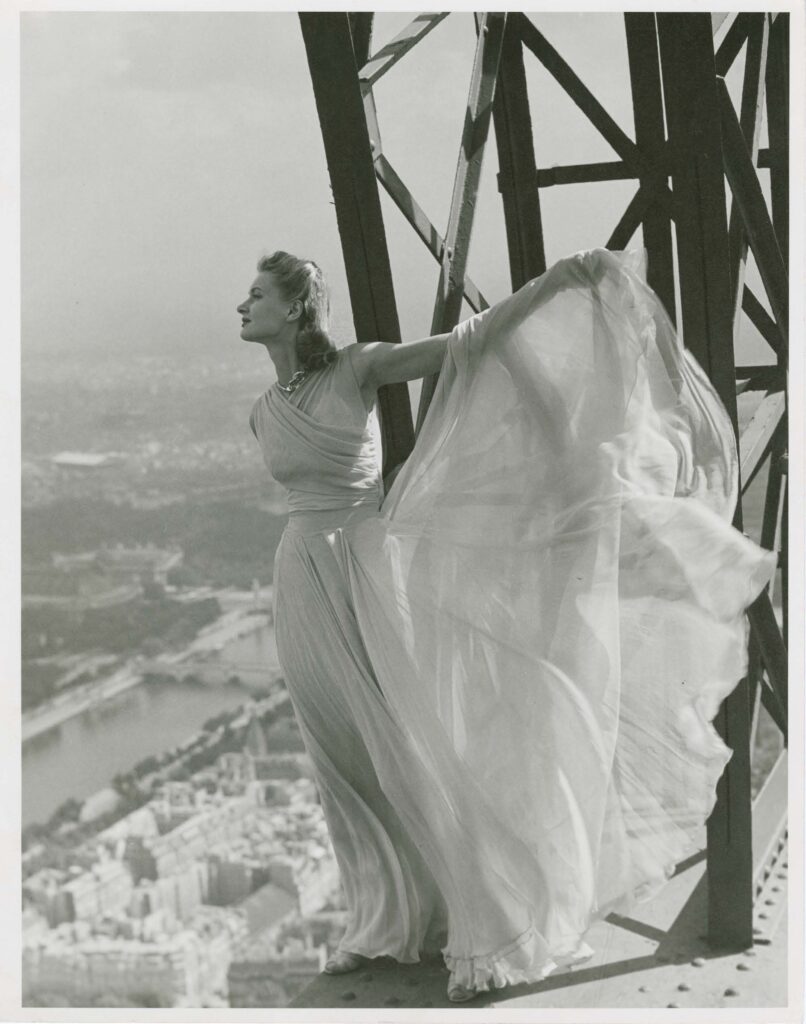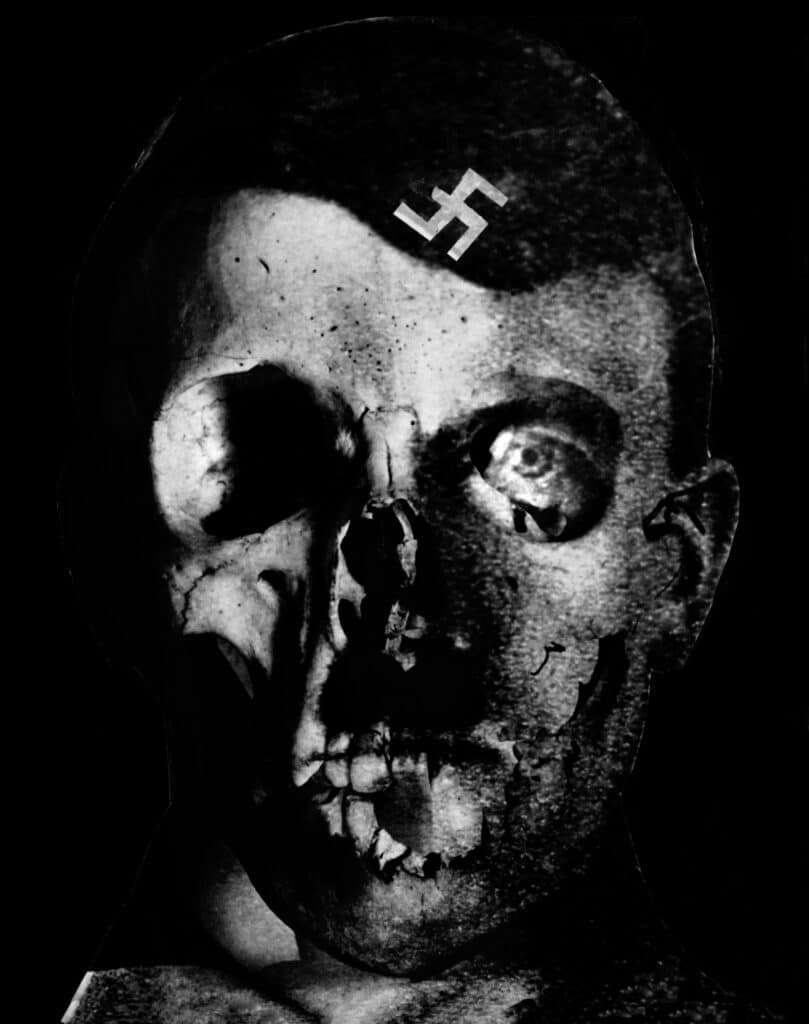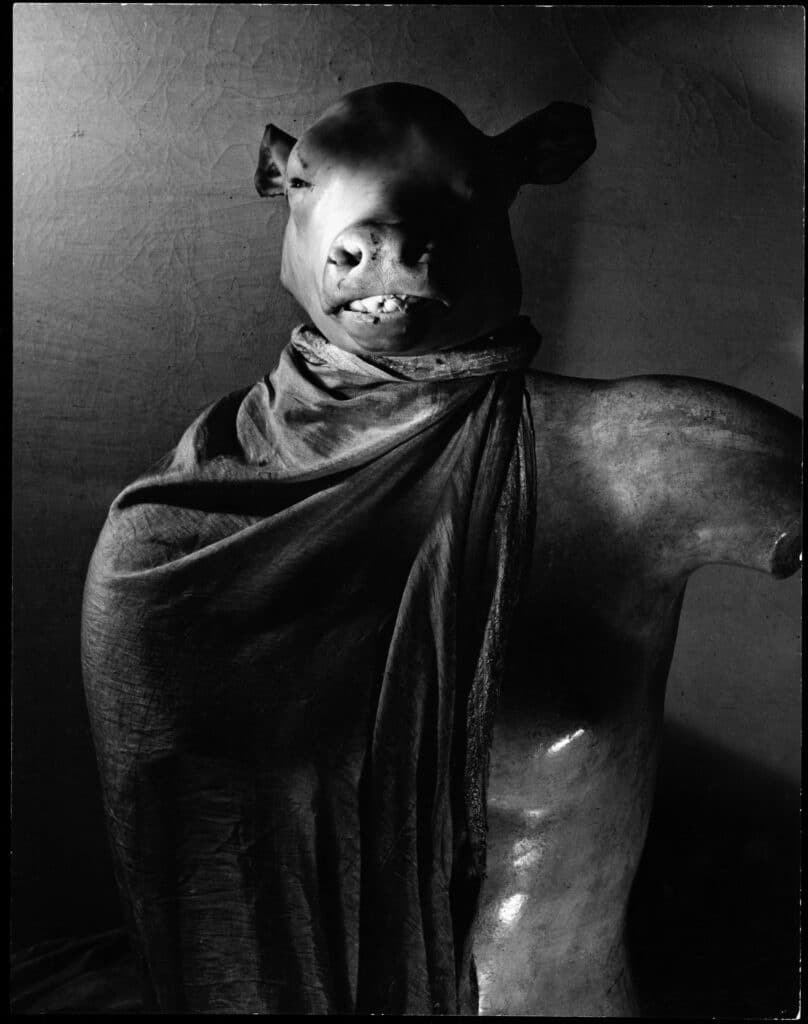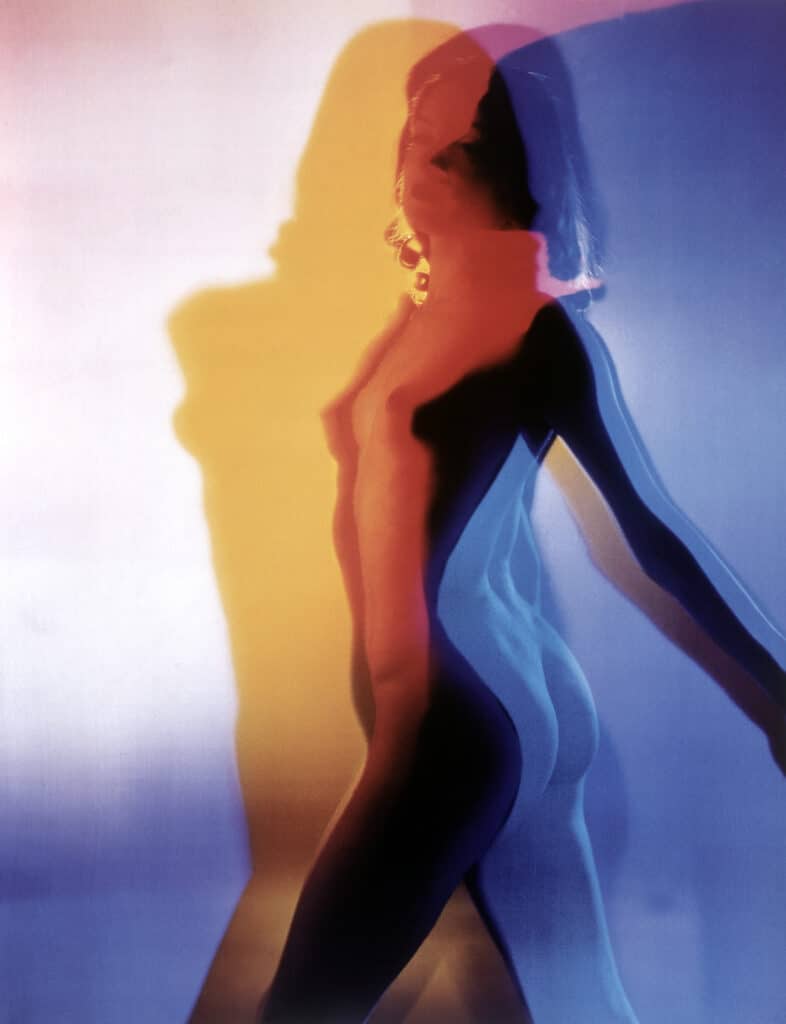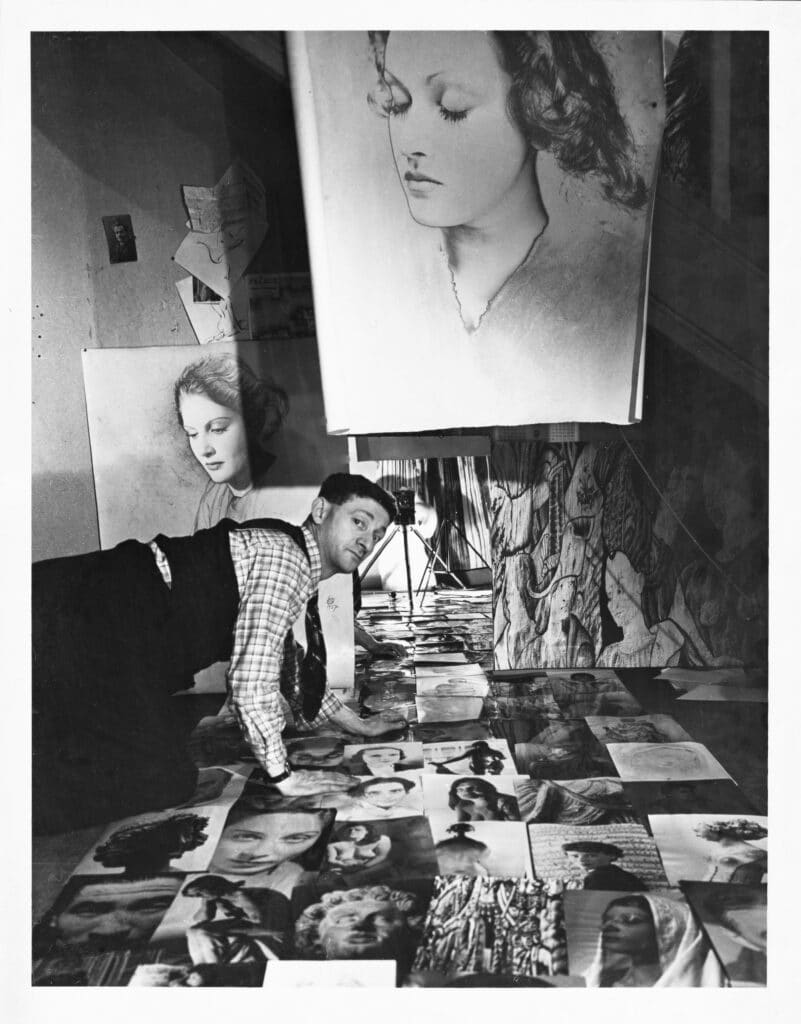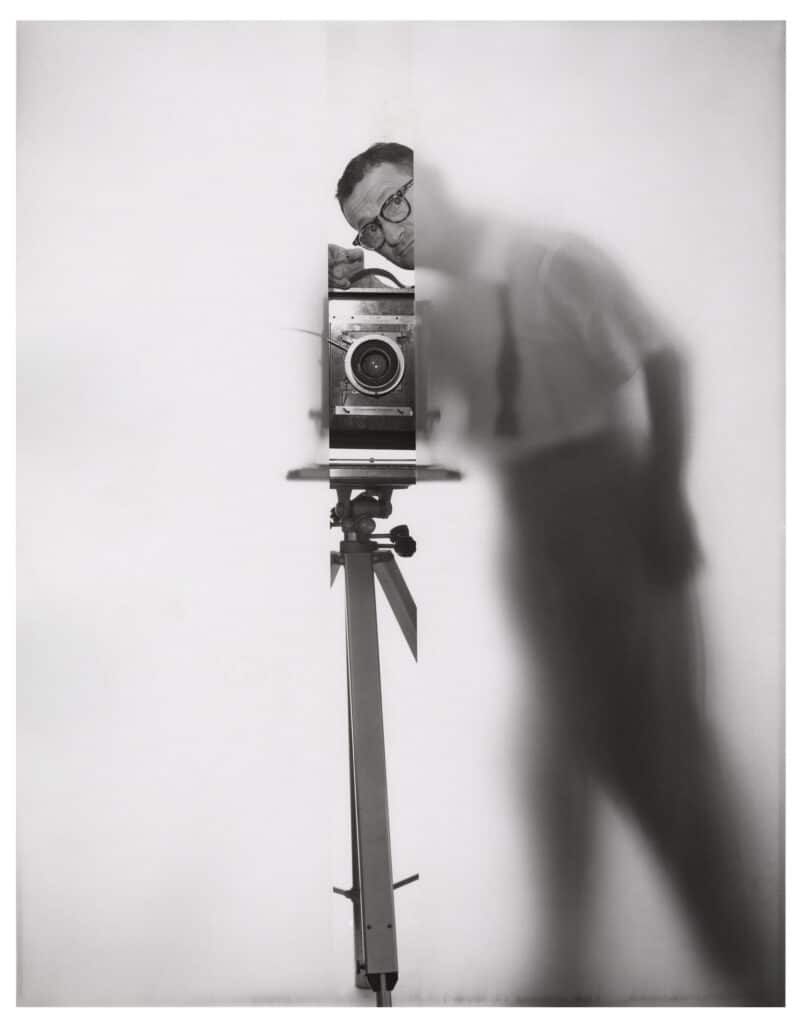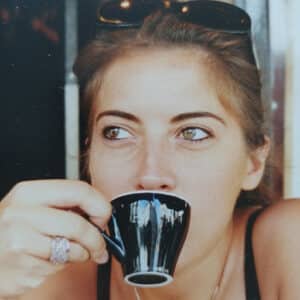Erwin Blumenfeld (1897–1969) is best known as the highest paid Vogue and Harper’s Bazaar fashion photographer in the mid-twentieth century. The Musée d’Art et d’Histoire du Judaïsme (MahJ) in Paris shows him in a different light, focusing on his “trials and tribulations from 1930 to 1950.” At the mansion of Saint-Aignan, in the heart of the Marais, nearly two hundred photographs retrace and contextualize the meandering paths this self-taught artist had to take before becoming an influential figure in wartime and postwar photography.
The exhibition is accompanied by the release of a Photo Poche (and PhotoFile) volume and the reissue of his autobiography, Jadis et Daguerre (published in English in 1999 as Eye to I: The Autobiography of a Photographer). Together, they foreground a revolutionary life: his connection with socio-political changes, his experiments in the visual arts, his premonitions about Nazism, and the experience of migration.
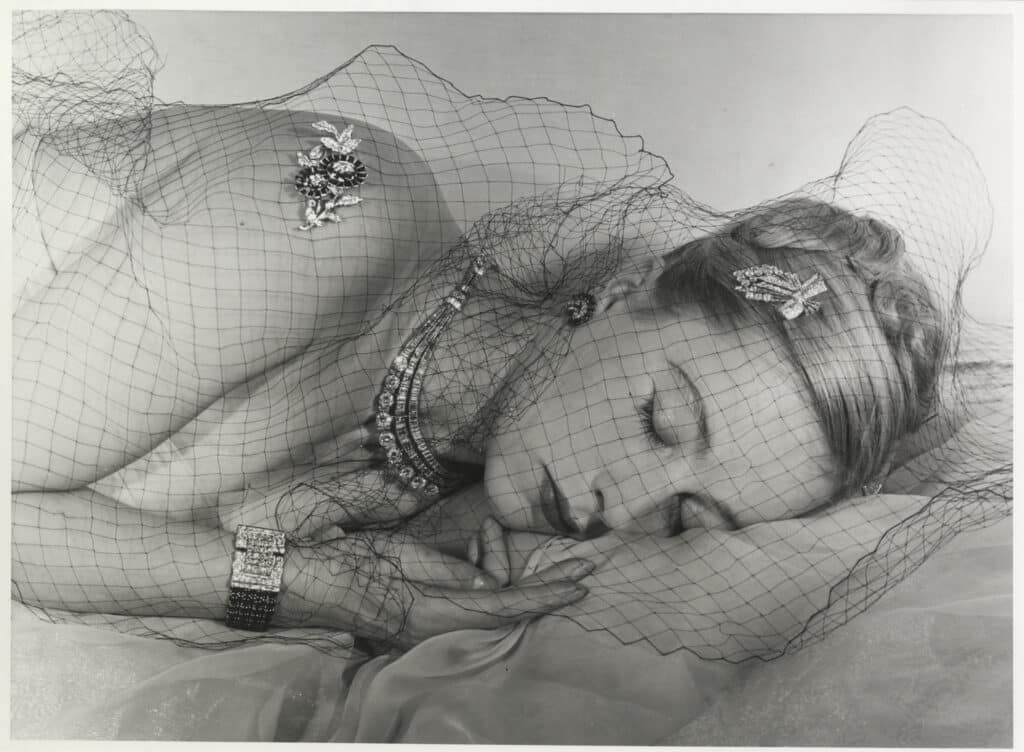
From Berlin to Amsterdam and Paris: An paean to women
The MahJ invites us to follow the “trials and tribulations” of this Berlin Jew, the son of an assimilated bourgeois family. At the age of sixteen, Erwin Blumenfeld had to drop out of school, following the death of his father, and become the breadwinner. He lived through World War I and lost his brother on the front. After the war, he left Germany for the Netherlands to be with his future wife Lena Citroen, the sister of his childhood friend Paul Citroen. Self-taught, this lover of literature and painting spent “his life filling in the gaps in his cultural upbringing,” points out Nadia Blumenfeld-Charbit, the photographer’s granddaughter, co-curator of the exhibition and in charge of the archives.
Blumenfeld’s vocation crystallized in the early 1930s, when he discovered a darkroom and a bellows in the backroom of his leather goods shop in Amsterdam. “During this period, he tried to become what he had always wanted to be, a painter, and he began to photograph the customers in his store,” the curator explains. “His passion gradually took shape as he was taking pictures, working in his lab with chemical and photographic manipulation.” But from 1933 on, his commerce dwindled to the point of bankruptcy.
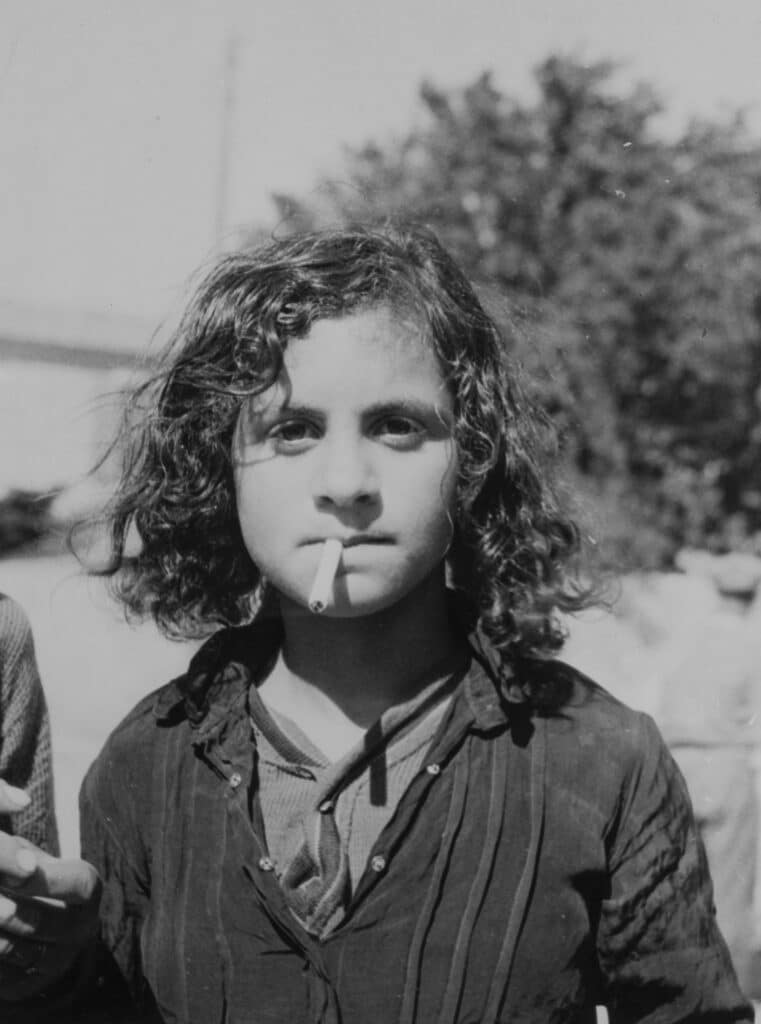
The exhibition offers an unexpected first look at an unpublished reportage, centered on a gypsy family in Saintes-Maries-de-la-Mer (1928–1930). The reportage shows the wanderings of the Roma, those “travelers” who would be subject to deportation during World War II. The series, in the original black-and-white prints, already shows Blumenfeld’s attraction for “cutouts with effects of montage.”
However, it was only in Paris, where he moved in 1936, that he made his first portraits and sculptures inspired by Aristide Maillol. His career took off two years later when he met the photographer Cecil Beaton who introduced him to Michel de Brunhoff, then editor-in-chief of Vogue. Blumenfeld’s fashion and advertising photographs quickly engendered a new obsession: with women and the female body.
He engaged in formal exploration, manipulating various props (mirrors, frosted glass, optical devices), and using effects of shadow and light. He produced his own prints, playing with solarization, masking, reticulation, and overprinting. Inspired by the Dadaists, the Surrealists, and the artistic avant-garde, Blumenfeld reinvented fashion through image innovation to enhance his models, for example, in his series at the top of the Eiffel Tower, which took him outside the studio.
The auguries of war
The exhibition next turns to Blumenfeld’s caricatures and photomontages that foreshadow the rise of Nazism. As soon as Hitler came to power in 1933, Blumenfeld created his portrait with a superimposed skull. “It is exceptional in his work,” comments Nicolas Feuillie, co-curator of the exhibition. “He shows political commitment as he had never done before. But his was a visceral reaction. In comparison, the vision of the photographer John Heartfield was more political: he features the Führer as an instrument of finance. Blumenfeld, instead, saw him very quickly as an incarnation of death, overlaying him with a skull and tears of blood.”
Blumenfeld’s own self-portrait, done in Amsterdam the same year and sent to his gallerist, Carl van Lier, with the words, “Warm greetings from the concentration camp of thought,” is equally terrifying in its foresight. “Van Lier, of Jewish origin, was deported and exterminated during World War II,” regretfully notes Nadia Blumenfeld-Charbit. Another room is dedicated to a series on the “Minotaur,” which would be renamed “The Dictator” after the war, and which evokes Hitler with a calf’s head mounted on an antique bust draped in a toga.
Just as his career was taking off, the year 1939 changed everything. Blumenfeld became a pariah, an “undesirable foreigner.” He spent two years in transit. He and his family were interned in one French camp after another, including one of fourteen that the Vichy regime installed in Morocco. “Despite his German background and the fact that he had become stateless, he was forced to go into an internment camp where he was held as a prisoner of war,” said his granddaughter. “He went through the same camps where Spanish Republicans had been detained in France during the Spanish Civil War. They were harsh, but they were not extermination camps. There were no deportations to Germany yet. We wanted to fully document this brutal experience.”
Finding his feet in America
In 1941, Erwin Blumenfeld managed to flee at the eleventh hour to New York thanks to the Hebrew Immigrant Aid Society, an organization assisting Jews. He soon connected with Harper’s Bazaar, with which he had signed a contract shortly before the outbreak of the war. His creativity immediately stood out thanks to the use of color, with the advent of Kodachrome, making Blumenfeld the highest paid photographer of his time. Some of his most innovative covers, such as The Red Cross and Doe Eye, are on display in the exhibition.
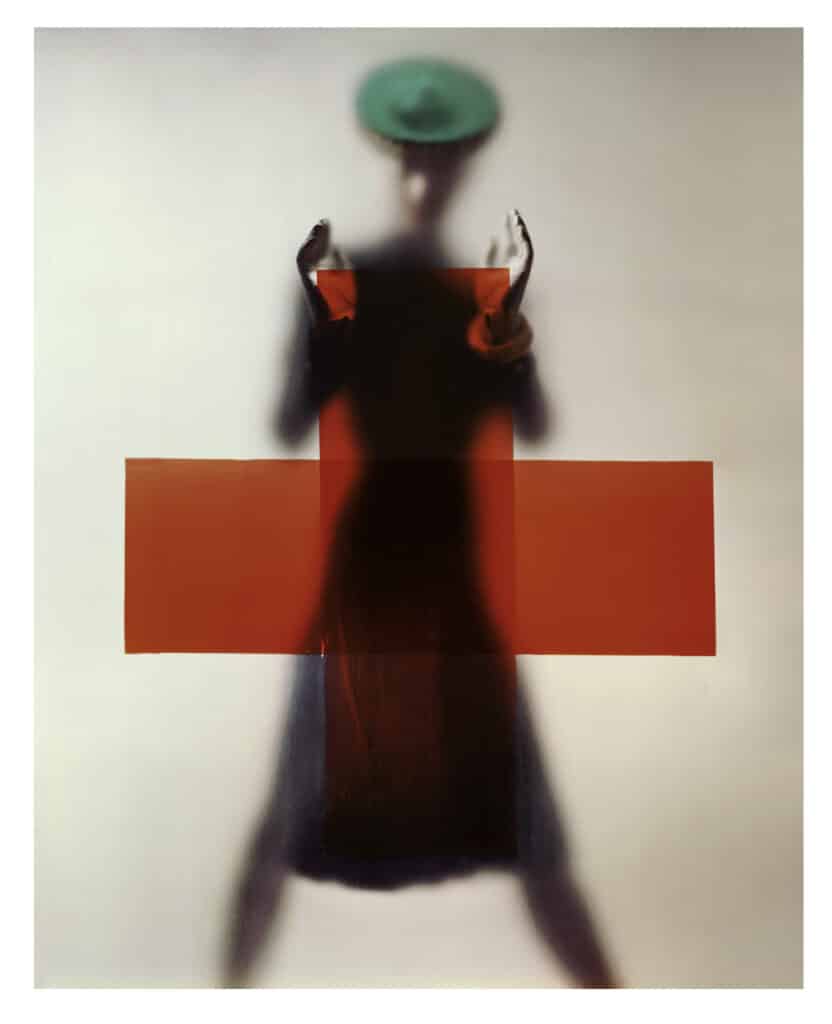
Although he faced some commercial constraints, he used them as a springboard for renewal through “art as contraband,” by carrying on his experiments as part of his commissions: for example, his photos shot with color filters. Using free forms in motion, he adopted a quasi-psychedelic style avant la lettre, considered as “the culmination of his experimental work.” He also drew inspiration from the masters, such as the emblematic shot of Vermeer’s Girl with a Pearl Earring.
The MahJ exhibition ends with another unpublished reportage, done in 1947 and devoted this time to American Indians in New Mexico, including vintage prints of festivities in San Ildefonso Pueblo. While this experimenter never stopped innovating, breaking codes, and creating new metaphors for the photographic act, he was above all a man who knew how to bounce back and who possessed rare resilience.
When asked what she best remembers about her grandfather, whom she knew during the last nine years of his life, Nadia Blumenfeld-Charbit answers with a smile: “His energy, his funny, hard-luck stories. He had a strong German accent and caustic humor. He was also a frantic nail biter. The lab chemicals he used caused his nails to fall off, leaving only pulp and blood. This stays in your mind. In some of the photos with him, taken by my mother, I am both worried and fascinated.”
Start to finish, these “trials and tribulations” present images unlike those we usually associate with this legendary photographer, revealing an “anti-exhibition of fashion photos,” while brilliantly evoking “other populations, discriminated and mistreated throughout the twentieth century.”
“The Trials and Tribulations of Erwin Blumenfeld”, 1930-1950, October 13, 2022 to March 5, 2023, Museum of Jewish Art and History, Hôtel de Saint-Aignan, 71, rue du Temple, 75003 Paris
Photofile Erwin Blumenfeld, Introduction by Emmanuelle de L’Écotais Thames&Hudson, 2023, $16.95, 144pp.
Erwin Blumenfeld, Jadis et Daguerre, Éditions Actes Sud, Collection “Babel,” 2022, €12.90, 496pp.


